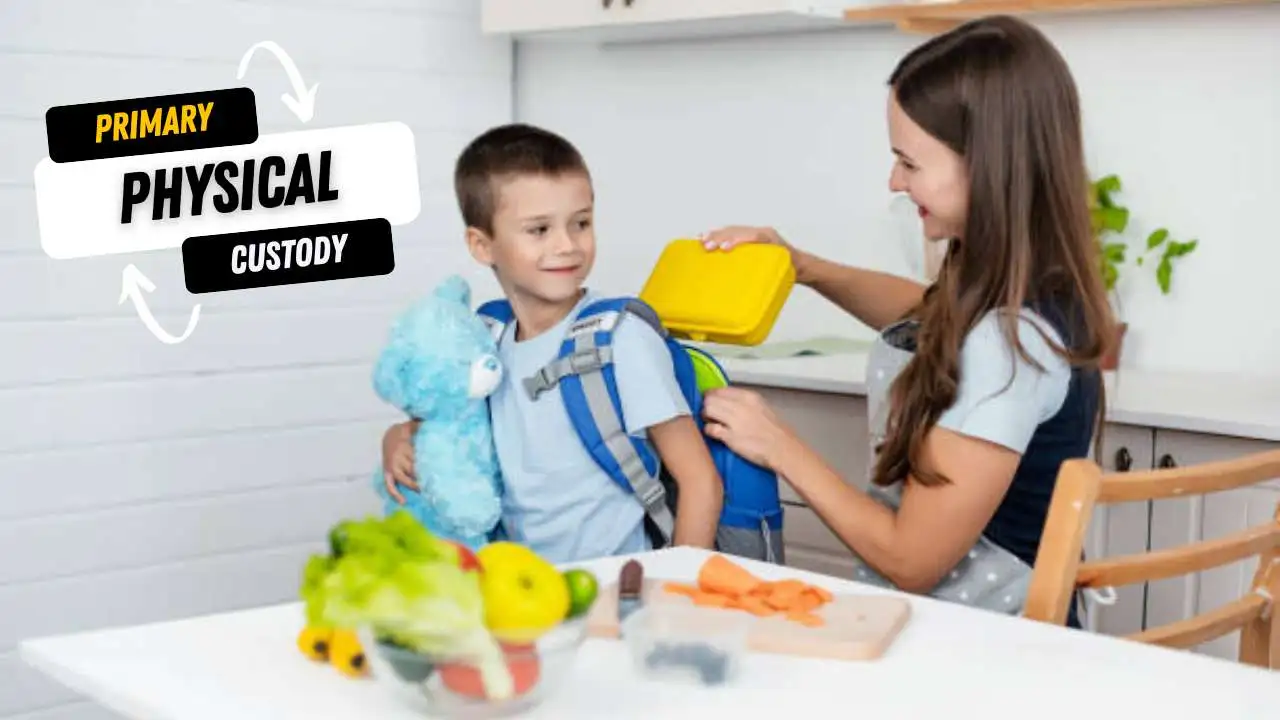GENERAL
Breaking Down Primary Physical Custody: What It Means and How It Works

Primary physical custody refers to where a child lives most of the time. It may seem intricate, but our aim is to simplify it. This guide will break down the basics, making it easier to understand.
We’ll cover what primary physical custody means, its implications, and the factors courts consider. By the end, you’ll have a clearer view of this important aspect of family law.
Are you navigating a custody case or simply curious? This introduction will set the stage for deeper insights to come.
Table of Contents
What Is Primary Physical Custody?
Primary physical custody refers to the parent with whom the child resides most of the time. This parent is responsible for the child’s daily care. This care includes meals, schooling, and after-school activities. Essentially, this parent acts as the child’s primary caretaker.
Legal Definitions and Implications
In legal terms, primary physical custody is defined by court orders. The parent with primary physical custody makes day-to-day decisions for the child.
However, this does not mean the other parent is excluded from the child’s life. They often have visitation rights or shared custody arrangements.
Read ALSO: The Role of Legal Support for a Mutual Separation Agreement in Divorce
Emotional and Practical Considerations
For the child, having a primary residence provides stability and routine. It minimizes disruptions in their schooling and social life.
For the custodial parent, it means a significant responsibility. But it also means the joy of daily interactions and bonding moments.
How Courts Determine Custody
There is a notion that mothers are more likely to get primary physical custody. But, can fathers get custody? Courts today focus on the child’s best interests, regardless of the parent’s gender.
Courts consider various factors when determining legal custody arrangements. The primary goal is to serve the best interests of the child. Here are some key considerations:
The Child’s Age and Needs
Younger children may need more stability and constant care. This can influence custody decisions. Courts look at each child’s unique needs when making a decision.
Parental Capabilities
Both parents’ ability to provide a stable, loving environment is scrutinized. Factors like employment, living conditions, and the ability to meet the child’s emotional needs are evaluated.
The Child’s Preference
In some cases, older children can express their preference for living arrangements. While not the sole factor, a child’s choice can influence the court’s decision.
Visitation Rights and Shared Custody
Even if one parent has primary physical custody, the other parent usually has visitation rights. Shared custody arrangements are also common. This is where both parents split the time spent with the child more evenly.
Standard Visitation Schedules
Standard visitation schedules might include:
- weekends
- holidays
- school vacations
This arrangement ensures that the non-custodial parent remains an active part of the child’s life.
Benefits of Shared Custody
Shared custody can be beneficial for the child, providing balanced time with both parents. It fosters healthy relationships. It ensures the child receives love and support from both sides.
Challenges of Shared Custody
Coordinating schedules and keeping things consistent between two homes can be tough. Parents need to communicate well and work together to make shared custody run smoothly.
Benefits of Primary Physical Custody
For the custodial parent, having primary physical custody has its advantages. Let’s explore some of the key benefits:
Stability for the Child
A single primary residence provides consistency in the child’s daily routine. It helps maintain stability in the following aspects of their lives:
- school life
- friendships
- extracurricular activities
Stronger Parent-Child Bond
With more time spent together, the custodial parent can develop a deeper bond with the child. Daily interactions and shared experiences contribute to a closer relationship.
Easier Decision-Making
Having the child most of the time simplifies decision-making on their daily needs. The custodial parent can make quick decisions. They don’t need to constantly coordinate with the other parent.
Responsibilities of the Custodial Parent
Being the primary custodian comes with significant responsibilities. It’s important to understand what’s involved:
Daily Care and Supervision
The custodial parent oversees the child’s daily routine, including meals, homework, and extracurricular activities. They ensure that the child’s physical and emotional needs are met.
Educational Support
Supporting the child’s education is a crucial responsibility. The custodial parent often coordinates with teachers, attends school meetings, and helps with homework.
Health and Well-being
The custodial parent manages the child’s healthcare needs, including regular check-ups, vaccinations, and any medical treatments. They also ensure the child maintains a healthy lifestyle.
Financial Implications of Primary Physical Custody
Primary physical custody carries financial implications for both parents. Understanding these aspects is essential:
Child Support
The non-custodial parent typically pays child support to the custodial parent. This financial contribution helps cover the child’s living expenses, education, and healthcare.
Shared Expenses
Even with child support, some expenses are shared. Parents might split costs for major expenses like medical bills, education fees, and extracurricular activities.
Budgeting and Planning
Proper budgeting and financial planning are crucial for the custodial parent. Managing daily expenses and planning for future needs ensures the child’s financial stability.
Legal Support and Resources
Navigating custody issues can be complex. Seeking legal support and resources is essential for both parents:
Consulting a Family Lawyer
A family lawyer can provide expert guidance on custody matters. They help parents understand their rights, responsibilities, and the legal processes involved.
Mediation Services
Mediation can be a valuable resource for resolving custody disputes amicably. It allows parents to work together to find a mutually agreeable solution.
Support Groups
Joining support groups can provide emotional support and practical advice. Connecting with other parents facing similar challenges can be reassuring and helpful.
Navigate The Primary Physical Custody Process with Confidence
Primary physical custody can significantly impact a child’s life. It offers stability, strengthens parent-child bonds, and simplifies decision-making. It has challenges. But, understanding the duties and benefits can help.
Courts aim to act in the child’s best interests, regardless of the parent’s gender. Both parents should seek legal advice and use available resources to navigate the process. With proper planning and cooperation, they can ensure the best outcome for their child.
For more interesting articles on a variety of topics, be sure to check out the rest of our blog. There’s always something new to discover. Happy reading!
-



 GENERAL2 months ago
GENERAL2 months agoUncovering the World of кинокрадко: The Dark Side of Film Piracy
-



 GENERAL1 month ago
GENERAL1 month agoUnveiling the Art of преводсч: How Translators Bridge Language Barriers
-



 YOGA9 months ago
YOGA9 months ago4 Person Yoga Poses for Beginners
-



 GENERAL2 months ago
GENERAL2 months agoThe Journey of iamnobody89757: From Anonymous User to Internet Sensation


















